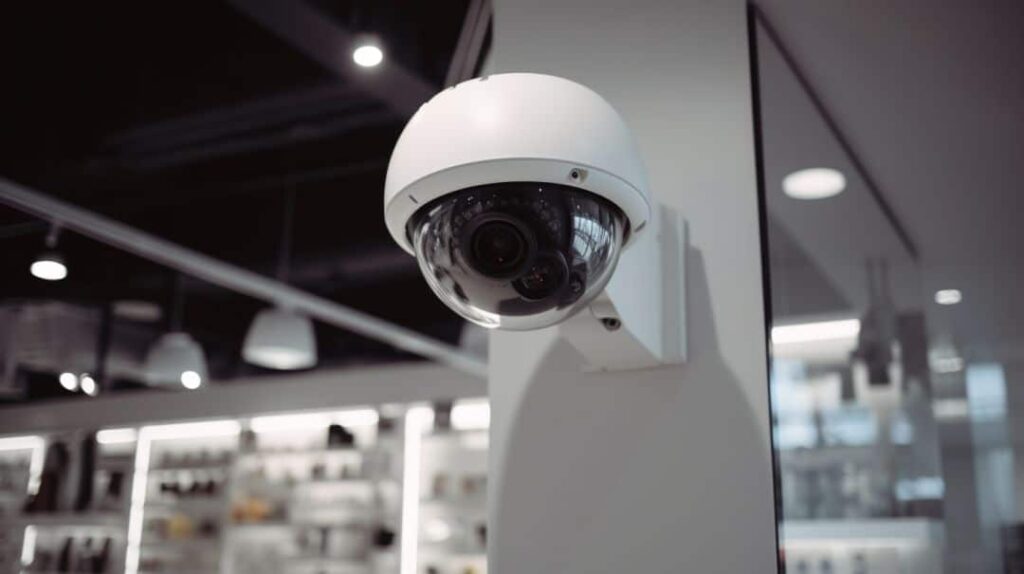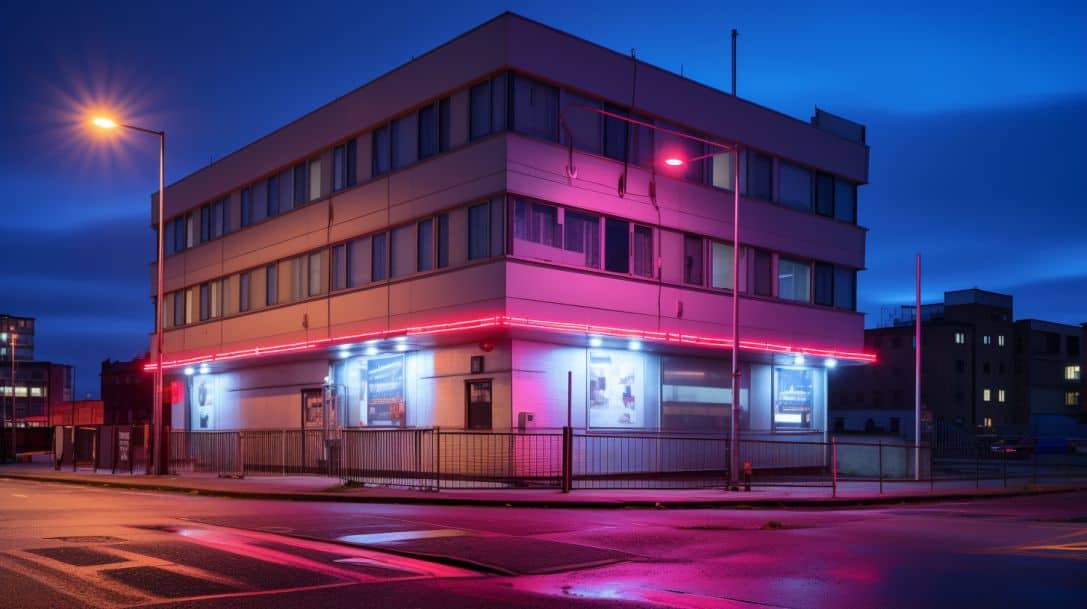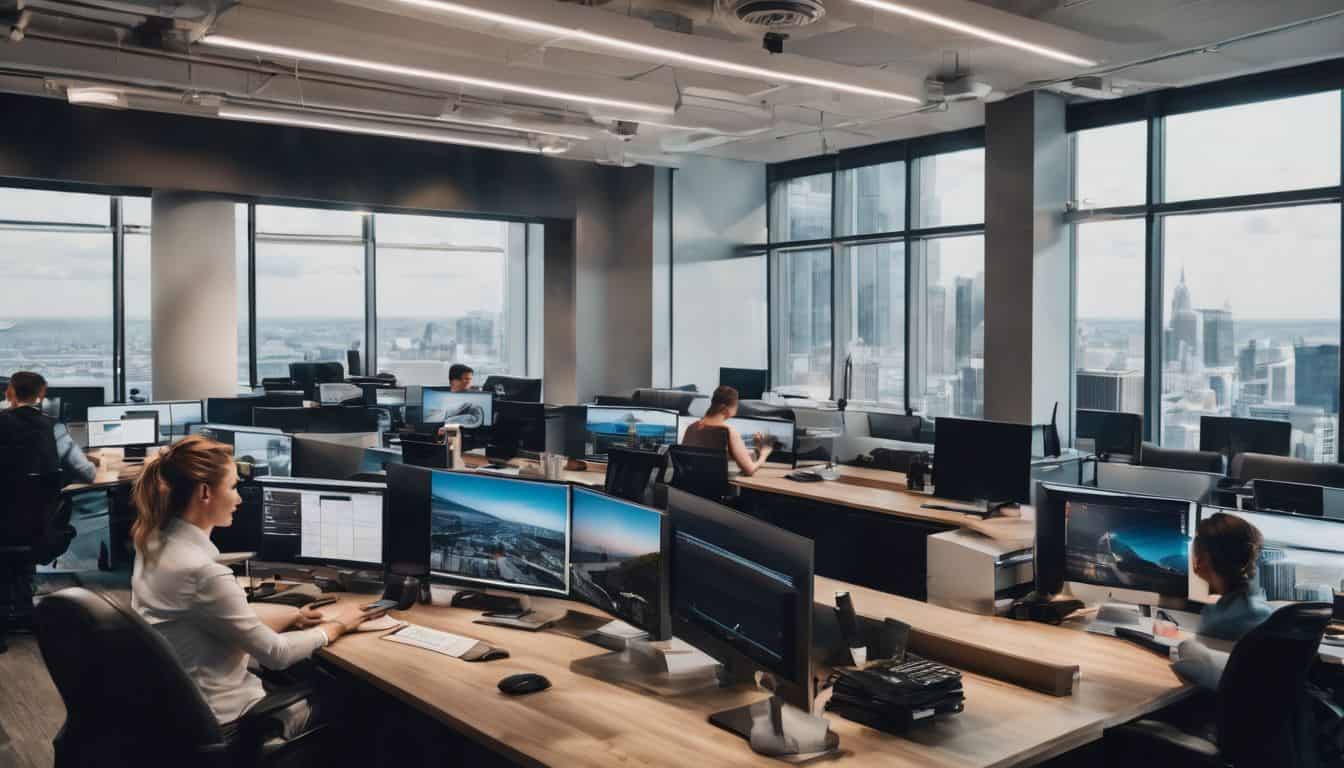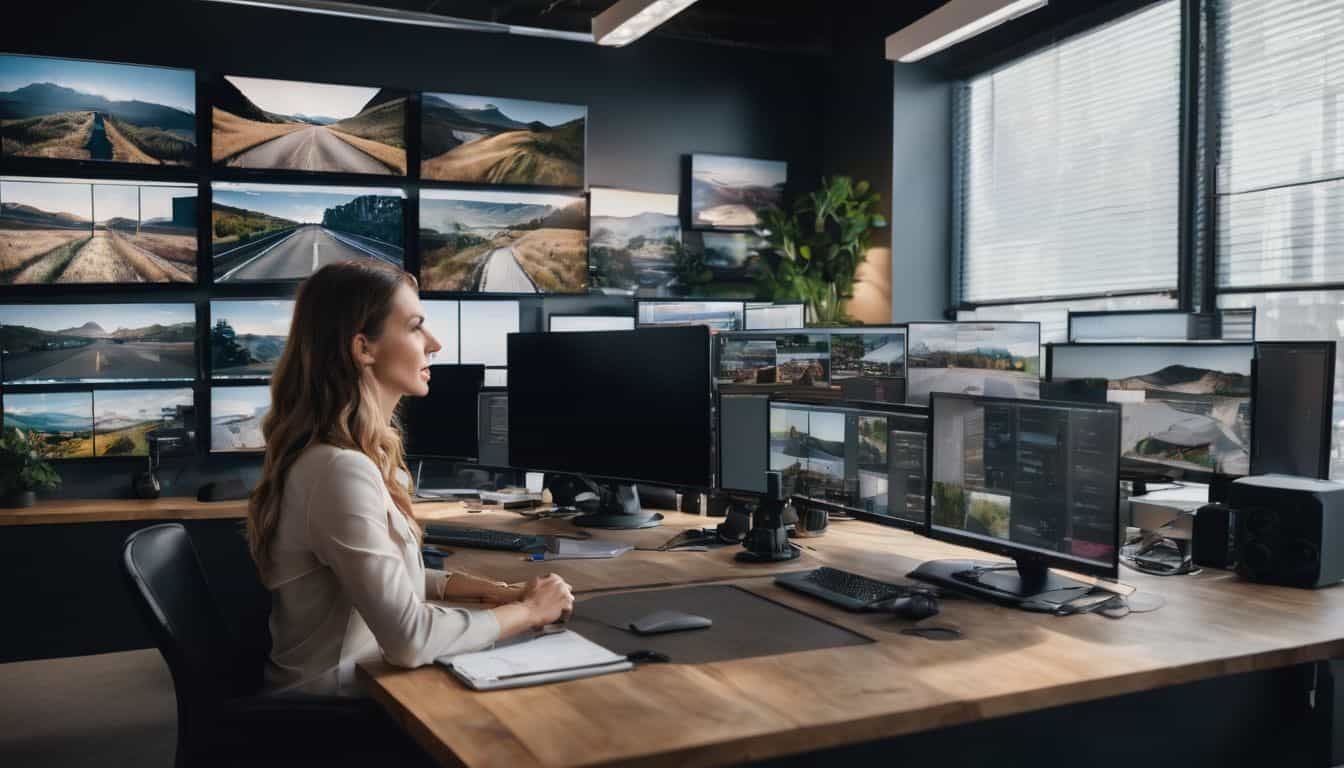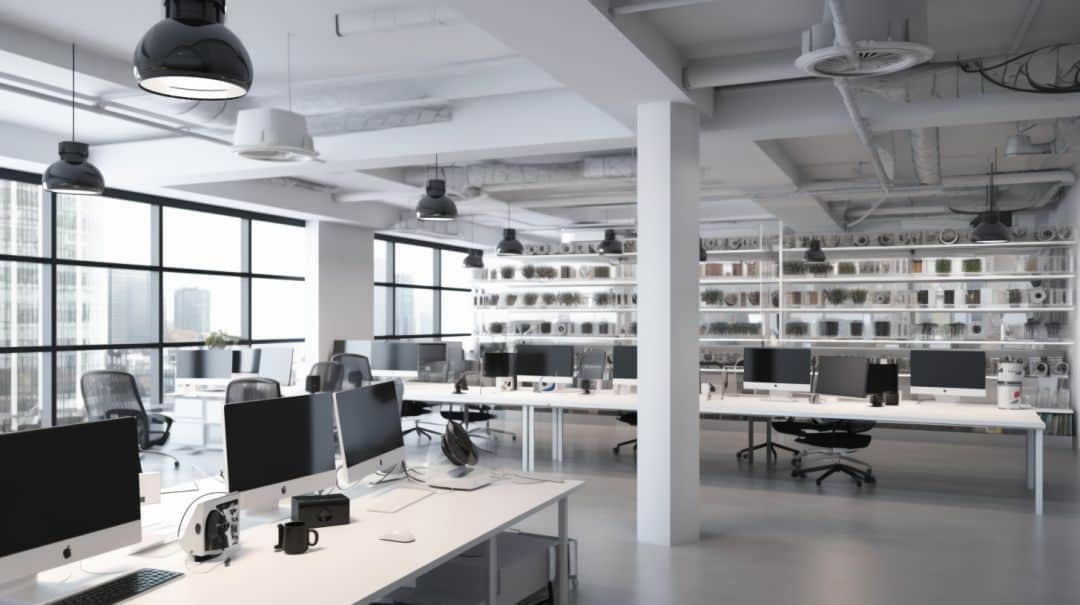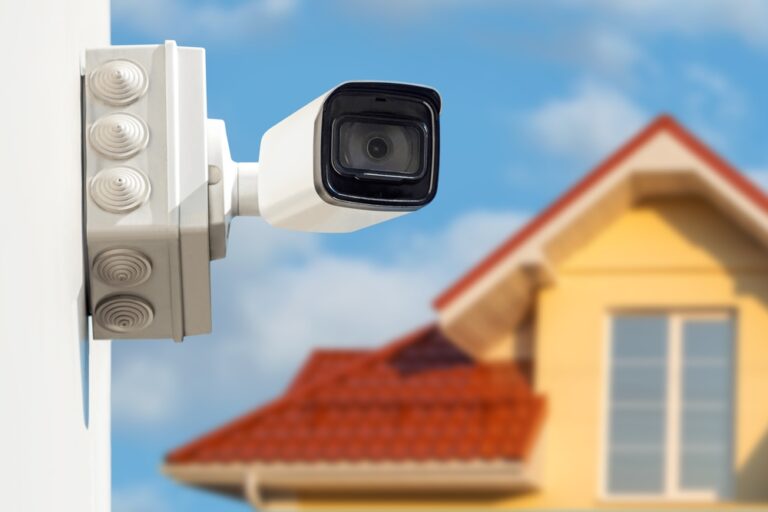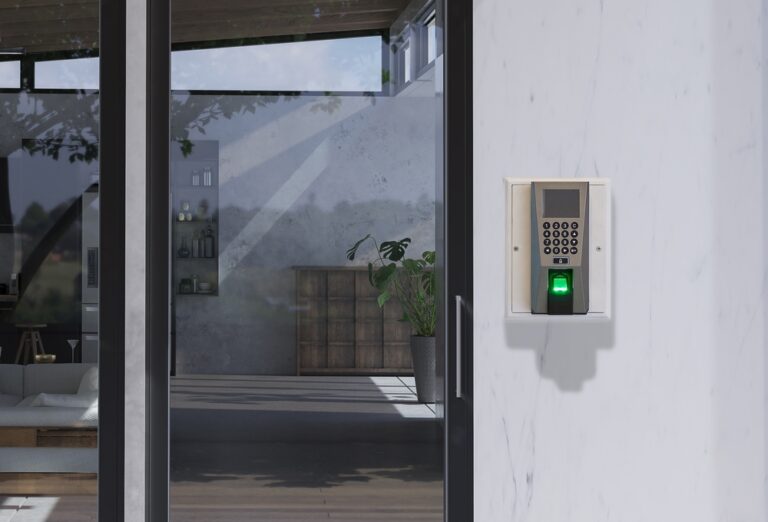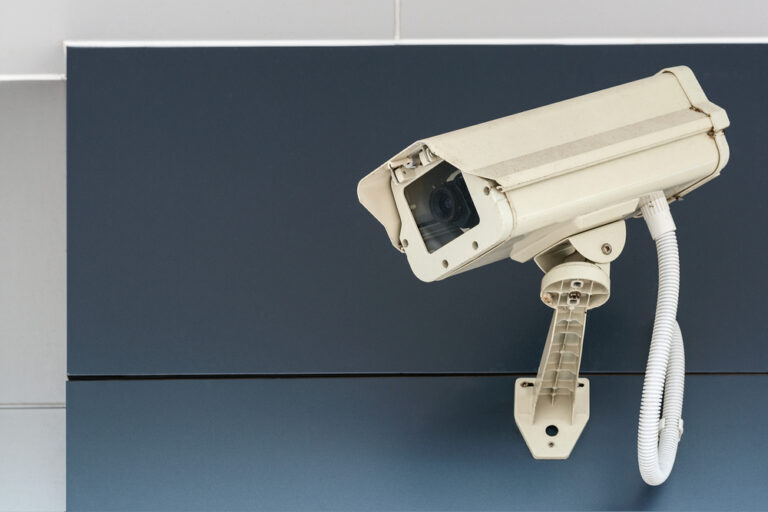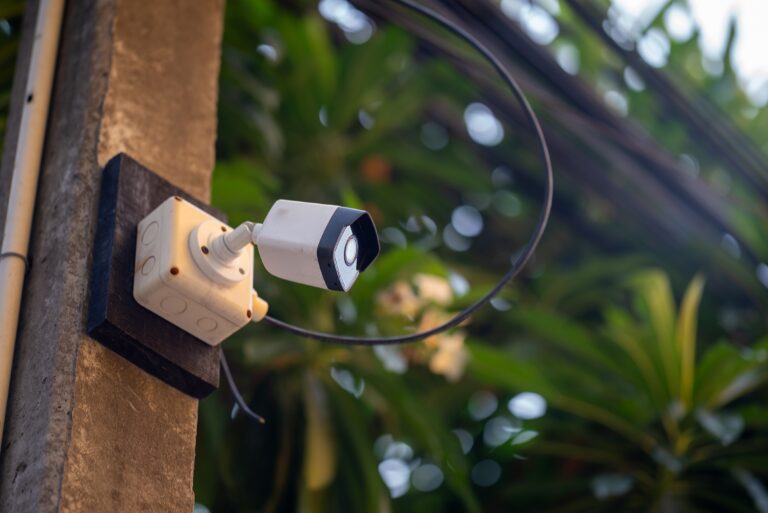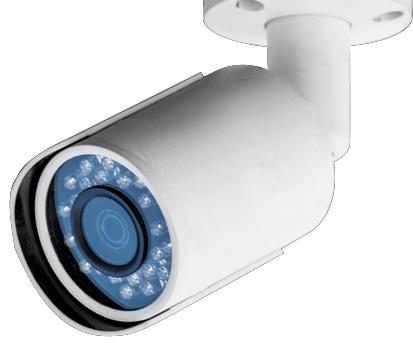- 1) Introduction
- 2) Benefits of Security Cameras in Retail Stores
- 3) The Importance of Security Camera Image Quality
- 4) Top 6 Benefits of Security Cameras in Retail Stores
- 5) Effective Use of Security Cameras for Retail Loss Prevention
- 6) Ensuring Employee Safety and Performance with Security Cameras
- 7) Maximizing Insurance Benefits and Mitigating Risk
- 8) Methods for Improving Security in Retail Stores
- 9) Conclusion – The Essential Role of Security Cameras in Retail Safety
-
10)
FAQs
- 10.1) How many security cameras will I realistically need in my retail store?
- 10.2) What camera capabilities actually help deter shoplifters and thieves?
- 10.3) Can security cameras do more for my business than just security monitoring?
- 10.4) What camera image resolution do you recommend I use?
- 10.5) How can new camera technologies keep me protected as risks evolve?
- 10.6) How are security cameras helping retailers adapt to changing risks?
Introduction
Retail stores face a number of security challenges, from shoplifting and employee theft to liability issues and fraudulent insurance claims. Security cameras provide an effective solution, allowing store owners to deter crime, resolve disputes, improve operations, and reduce costs.
This article will explore the key benefits of using security cameras in retail stores and provide actionable recommendations for business owners looking to enhance safety and prevent loss. We’ll cover factors like image quality, analytics, camera types, strategic placement, and how to maximize ROI on a retail video surveillance system.
| Key Takeaways |
|---|
| Security cameras deter theft and improve safety in retail stores. |
| Choosing cameras with high resolution and storage capacity is crucial. |
| Proper placement and video analytics further boost effectiveness. |
| Cameras promote employee accountability, resolve disputes, and prevent fraud. |
| Retailers can reduce operational costs and insurance premiums with an effective surveillance system. |
Implementing security cameras makes good business sense for retail store owners seeking to create a safe, productive environment for customers and staff alike. Let’s look at how.
Benefits of Security Cameras in Retail Stores
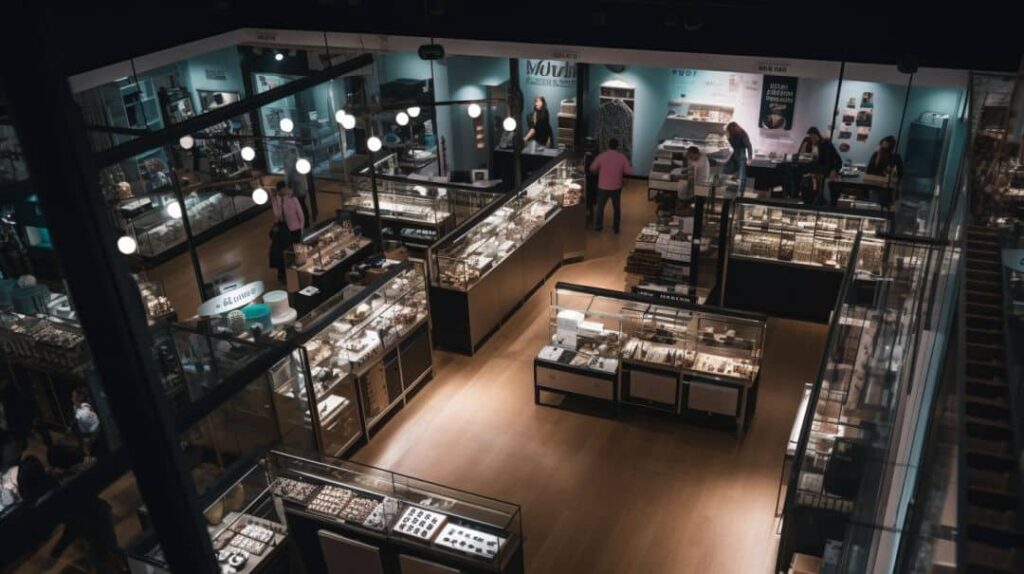
Integrating security cameras into a retail store setup provides numerous advantages that impact profitability and customer experience.
Prevention of Theft and Shoplifting
- Visible security cameras deter shoplifting and employee theft.
- Studies show stores with cameras have lower shoplifting rates.
- Knowing they are being recorded discourages potential thieves.
- Effective placement eliminates blind spots.
Monitoring and Surveillance
- Cameras allow monitoring of real-time sales floor, checkout, stock room, and parking lot activity.
- Motion alerts notify management of suspicious activity.
- Analytics like loitering detection automatically flag concerning behavior.
Employee Accountability and Productivity
- Camera presence promotes accountability, improving productivity.
- Workers avoid undesirable activities when being recorded.
- Deters false claims of inappropriate behavior.
Resolution of Disputes and Investigations
- Video provides unbiased record of in-store activities.
- Assists in resolving disputes over damaged goods, transactions, liability claims, etc.
- Allows investigation of inventory shrinkage, theft, shoplifting.
Loss Prevention and Operational Efficiency
- U.S. retailers lose $50 billion annually to shrinkage (theft/damage).
- Cameras significantly reduce losses through deterrence and investigations.
- Fewer losses increase profits.
- Video validates efficient operations or highlights inconsistencies.
Remote Monitoring and Scalability
- Cloud capabilities enable secure offsite live monitoring via web or mobile app.
- Owning multiple stores is manageable with remote access.
- Easy to add additional cloud camera licenses as needed.
Security cameras are a smart investment for retail stores, reducing theft, improving operations, and creating a safe environment. Proper placement, high-quality cameras, and active monitoring are key to maximizing benefits.
The Importance of Security Camera Image Quality
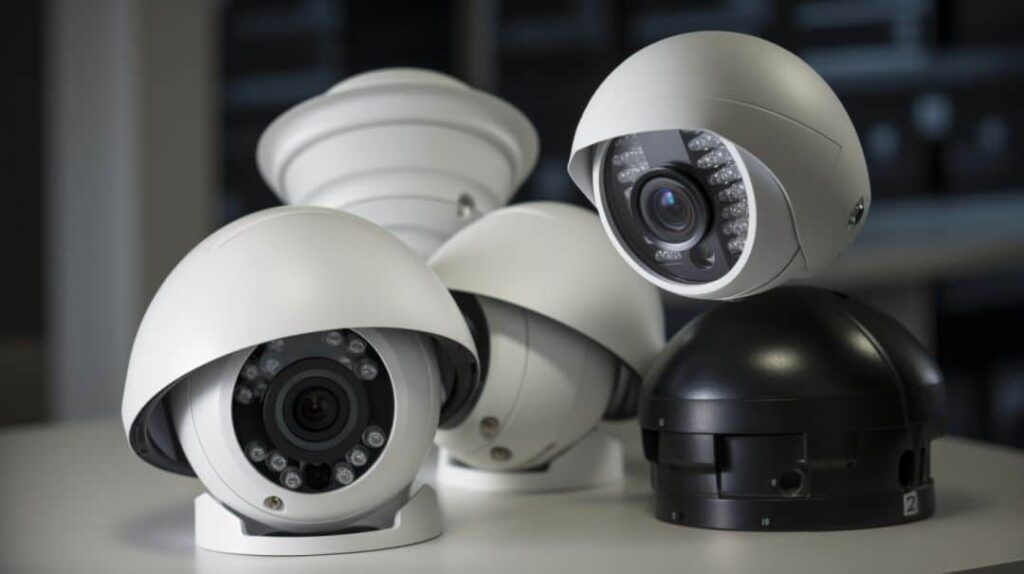
In order to maximize the investigative and deterrent benefits of surveillance cameras, retail store owners should carefully consider video resolution, storage capacity, analytics, and placement.
Choosing the Right Resolution
Higher resolution corresponds to sharper image quality and more detailed footage. For identifying individuals and small objects like jewelry, at least 1080p resolution is recommended. Lower quality cameras can produce grainy, pixelated footage that is unusable for recognizing faces or license plate numbers.
Some key factors to consider when selecting resolution include:
- 1080p provides a good balance of clarity and file size for most retail applications.
- 4K or ultra HD resolutions exceeding 3MP offer extra sharpness but generate very large files. Useful for wide spaces.
- 720p delivers sufficient recognition quality for smaller stores when storage is limited.
- VGA or analog systems are not recommended due to poor quality.
Ideally, high traffic areas like entrances, point-of-sale, and loading docks should utilize maximum 4K resolution. Meanwhile, storage rooms and aisles can be monitored at 1080p or 720p based on activity levels.
Sufficient Storage Capacity
High-resolution cameras generate larger video files. Adequate onboard and cloud storage is needed to store several weeks of recordings. Compression technology like H.265 helps reduce storage needs. Lacking sufficient retention capacity will result in recordings being overwritten before incidents can be reviewed.
When calculating the required storage capacity, factors to consider include:
- Video file size based on resolution, framerate, streaming quality
- Desired retention period for searching past recordings
- Bandwidth limitations that constrain recording quality
- Growth needs allowing for expanding camera system
- Built-in NVR storage vs cloud vs hybrid storage options
Utilizing Retail Video Analytics
Built-in video analytics like motion detection, loitering alerts, people counting, and heatmap reports provide useful business intelligence. Smart cameras can flag suspicious activity in real-time, allowing a faster response. Historical reporting provides traffic patterns, conversion data, and operational insights.
Key retail video analytics to leverage include:
- Motion detection with push notifications to alert staff
- People counting for store traffic patterns
- Heatmaps showing customer engagement
- Dwell time monitoring to deter loitering
- Object detection to flag unattended bags
- Intelligent searching of recordings by criteria
Proper Camera Placement
Carefully planned camera positioning eliminates blind spots while covering key areas like entry/exit points, checkout counters, and inventory aisles. Adjustable mounts allow angle tweaking after initial installation. Both wide angle and pinpoint zoom cameras have their place in a retail surveillance plan.
Strategic camera placement guidelines:
- Position cameras high with wide field of view to avoid obstructions
- Ensure entrance, POS, backrooms, and loading areas are well-covered
- Avoid recesses, overhangs, or shelving that block camera view
- Place covert cameras to blend in over high-theft areas
- Ensure adequate illumination for night recordings
- Test sight lines prior to permanent installation
Choosing the right security cameras and thoughtfully implementing them significantly enhances loss prevention, safety, and operational efficiency in retail stores.
Top 6 Benefits of Security Cameras in Retail Stores
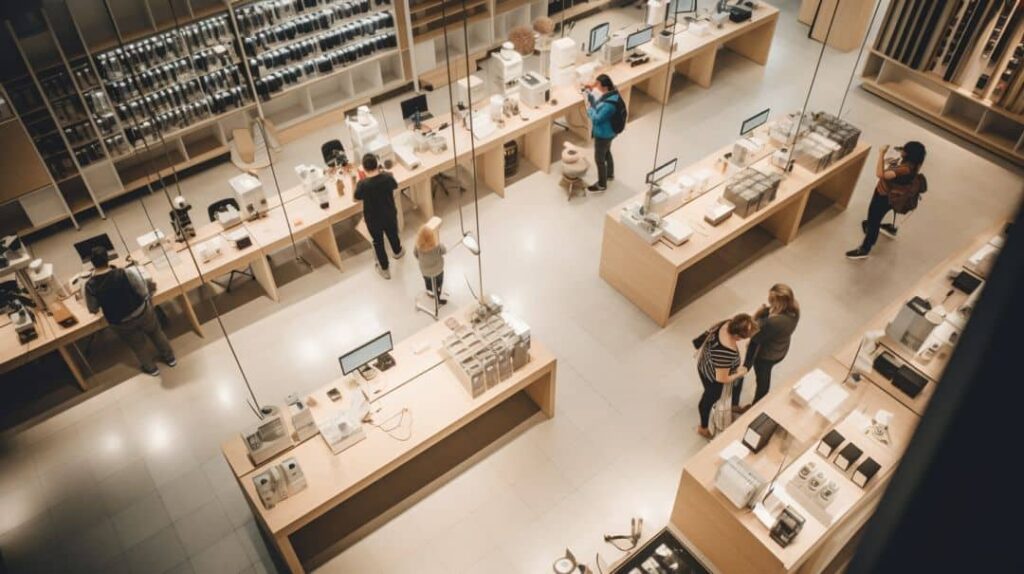
Implementing security cameras provides major advantages for retail stores seeking to prevent losses, improve safety, increase efficiency, and build customer loyalty.
Theft Prevention
Deterring theft through video surveillance provides huge cost savings and protects profits.
- Visible cameras discourage shoplifting, employee theft, and fraud.
- Both opportunistic thieves and dishonest staff are deterred from attempting theft while being recorded.
- Properly positioned cameras eliminate blind spots that could be exploited.
- Recorded evidence aids in prosecuting and banning apprehended shoplifters.
- Analyzing camera data helps identify vulnerabilities in operations and inventory control.
Stores that prominently display live camera feeds have reported shoplifting decreases of up to 90% shortly after installation. The deterrent effect also spreads by word-of-mouth.
Real-time Monitoring
Camera systems allow store owners to oversee operations remotely at any time via web or mobile apps.
- Management can check in live to view floor activity, maintain visibility.
- Smart motion alerts instantly notify of suspicious activity.
- Rapid response can interrupt crimes like vandalism or shoplifting attempts in progress.
- Issues like long checkout lines or hazardous spills can also be addressed promptly.
Proactive real-time monitoring translates directly into higher sales and fewer losses.
Employee Accountability
The presence of cameras encourages staff to uphold standards of honesty, productivity, safety, and customer service.
- Employees avoid loafing, theft, policy violations, or poor performance when being recorded.
- Customer complaints can be validated through video review.
- False claims of inappropriate behavior can be disproven.
Well-managed employees are the cornerstone of any successful retail store. Cameras powerfully promote accountability.
Customer Safety and Satisfaction
Surveillance systems increase customer feelings of safety and assurance of fair treatment.
- Shoppers feel more protected against threats like robbery in a monitored environment.
- Cameras also deter assaults, fights, vandalism, and other crimes against patrons.
- In disputes over returns, damages, or conduct, video provides unbiased evidence.
Satisfied, safe customers directly translate into improved sales, fewer lawsuits, and positive branding.
Insurance Benefits
Proactive loss prevention and liability protection measures can significantly reduce a retailer’s insurance costs.
- Video verification fights fraudulent or exaggerated injury/liability claims.
- Documented security policies may qualify stores for lower premium discounts.
- Theft reduction means fewer inventory claims to submit.
Maintaining adequate insurance coverage at reasonable rates is essential for retail business success. Security cameras help achieve this.
Reduced Security Personnel Needs
With eyes on the premises 24/7, fewer staff are needed for physical surveillance and patrolling.
- Large retail spaces require multiple guards for adequate coverage.
- Camera systems provide more comprehensive monitoring at a lower cost.
- Time and expenses associated with hiring and managing guards is reduced.
Well-designed camera coverage frees up budgets to better serve customers.
The benefits of retail security cameras make them a vital component of protecting assets and sustaining profitability.
Effective Use of Security Cameras for Retail Loss Prevention
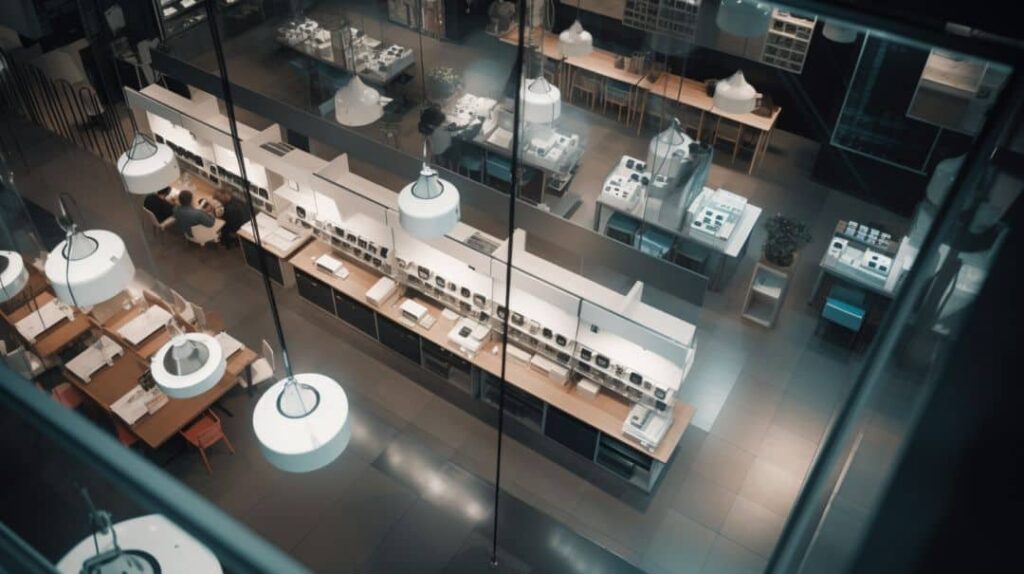
Using security cameras specifically to prevent inventory shrinkage and theft requires proactive monitoring, prompt response to flagged activities, visible deterrence, and thorough investigations.
Real-time Monitoring and Prompt Response
Actively watching live feeds and responding quickly to smart motion alerts allows staff to interrupt suspicious behavior and prevent losses.
- Monitor key areas like entryways, tightly spaced aisles, and POS systems.
- Motion detection instantly alerts to activity during off hours.
- Watch for behaviors like disabling sensors, concealing merchandise, or lurking.
- Deter with visible staff presence and politely greet questionable individuals.
Early intervention in potential theft results in significantly fewer lost goods.
Recorded Evidence for Investigations
Reviewing stored footage facilitates detailed shrinkage investigations and provides evidence for prosecutions.
- Analyze recording timeline around inventory audits to identify disappearing goods.
- Cross-reference suspicious transaction timestamps with video from POS cameras.
- Focus reviews around delivery schedules to catch staging or theft of new stock.
- Provide irrefutable video evidence to police when filing charges for recidivist shoplifters.
Matching deduced theft timeframes with recordings helps determine exactly what occurred and who is responsible for inventory losses.
Deterrence Through Visible Surveillance
Prominently displaying live feeds from surveillance cameras greatly discourages theft by reinforcing the perception of criminals being watched.
Effective visible deterrence tactics include:
- Posting monitor displays screening live camera feeds aimed at store entrance.
- Using digital signage to display images of shoplifters being caught on camera.
- Positioning dome cameras conspicuously overhead in key aisles.
- Utilizing strategically placed decoy cameras with blinking LEDs.
- Signage informing customers of active video surveillance in use.
Visible demonstration of pervasive security camera coverage leaves potential thieves unwilling to take the risk.
To learn more best practices on leveraging video surveillance technology for retail loss prevention, contact a specialist at Jefferson Security Systems. With over 20 years of experience designing and installing camera networks for retailers across Philadelphia and beyond, we are ready to help protect your inventory and optimize profitability.
Ensuring Employee Safety and Performance with Security Cameras

In addition to deterring external theft, retail video surveillance also provides valuable protection and accountability benefits for a store’s staff.
Monitoring for Unsafe Situations
Cameras help identify developing hazards or security gaps around staff work areas that could lead to accidents and injuries.
- Loading docks and stockrooms can be monitored for broken equipment, clutter, or spills.
- Parking areas can be checked remotely for adequate lighting and patrolling after dark.
- High-traffic zones can be reviewed for tripping dangers or points of congestion.
Proactively correcting unsafe conditions prevents worker compensation claims.
Promoting a Responsible Work Environment
Employees are encouraged to uphold workplace conduct, performance, and safety policies knowing their compliance is subject to video review.
- Staff avoid neglecting tasks, taking unauthorized breaks, or browsing phones when being monitored.
- Knowing they are on camera discourages harassment, profanity, or hostile behaviors.
- Customer complaints alleging poor service or rudeness can be investigated.
Well-managed staff are key to delivering an outstanding retail experience. Cameras reinforce this priority.
Enhancing Safety Measures for Employees
Analyzing camera data helps determine if additional precautions like security guards, buddy systems, or panic buttons are warranted to protect vulnerable staff.
- Review recordings regularly to identify high-risk situations confronting employees.
- Station guards or additional personnel in areas prone to hostile customers like returns desks.
- Implement buddy systems for employees working alone late nights or handling cash deposits.
- Discreet panic buttons can be linked to silently alert authorities of escalating threats.
Protecting employee wellbeing fosters lower turnover, higher morale, and better customer experiences. Integrating smart security cameras is fundamental to sustaining a safe, professional retail work environment where people thrive.
Maximizing Insurance Benefits and Mitigating Risk
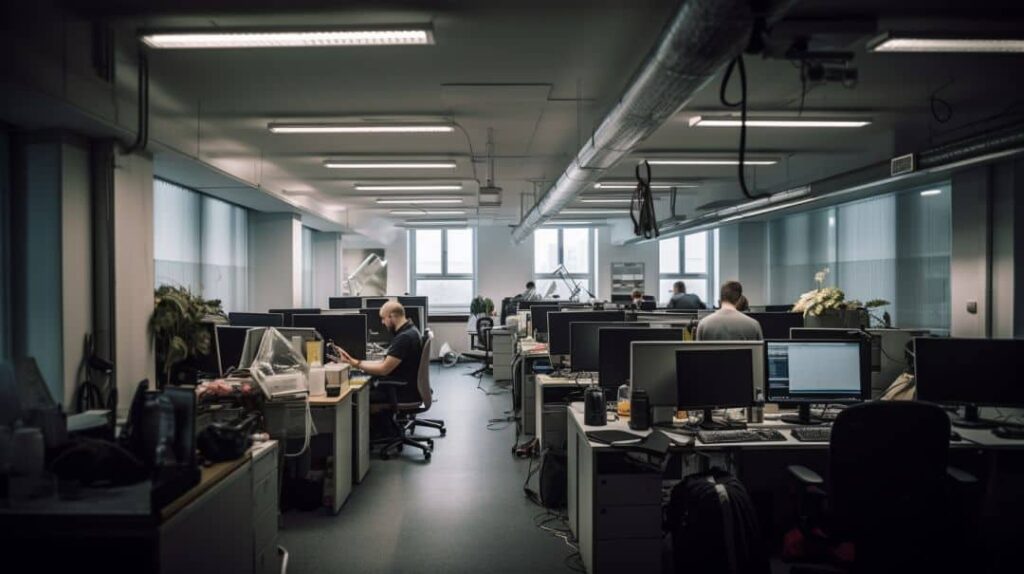
Implementing a properly designed video surveillance system is one of the best ways retail stores can control risks, disputes, liability claims, and losses, leading to lower insurance premiums.
Deterring Staged Injury Incidents
Security cameras help defend against fraudulent or exaggerated injury claims by patrons seeking financial gain.
- Cameras capture visual proof to refute fake “slip and fall” accidents deliberately staged to generate lawsuits. Date and time stamps definitively confirm or rebut claims.
- Attempts by dishonest individuals to conceal preexisting injuries before faking an incident inside the store can be recorded by observant cameras. This prevents inflated medical claims.
- Cameras also deter such staged accidents by making criminals aware their actions are being recorded. Signage about active video surveillance helps further prevent fraud.
Avoiding inflated payouts and legal costs from fraudulent injury claims prevents increased liability premiums.
Validating Genuine Incidents and Claims
For legitimate incidents and insurance claims, security camera footage provides important validation and documentation.
- Video evidence from multiple angles provides proof of how genuine accidents occurred, supporting just claims.
- Time and date stamps on recordings confirm when real events took place.
- Footage can provide details like weather conditions or hazard visibility to establish or refute liability.
- Documenting legitimate incidents aids prompt claim resolution, preventing inflated costs from drawn out disputes.
The ability to validate claims through video allows retailers to defend themselves against exaggerated demands while promptly settling justified ones. This oversight reduces overall claim costs.
Deterring Property Damage and Theft
Security cameras also deter acts of vandalism, arson, property damage, shoplifting and employee theft through constant monitoring.
- Criminals are discouraged from attempting crimes that would be captured on video, providing evidence against them.
- Visibly displaying live feeds and warning signage promotes perception of criminals being watched, deterring loss.
- Recorded footage aids police investigations and prosecutions when damage or theft does occur.
Reducing property losses lowers the number and severity of related insurance claims.
Documenting Safety and Loss Prevention Efforts
Insurance providers offer premium discounts in recognition of proactive loss and risk mitigation efforts like comprehensive video surveillance.
- Documented facility security plans incorporating camera policies demonstrate protection of assets.
- Regular review of footage provides proof of policy enforcement and compliance over time.
- Ongoing system maintenance and upgrades show evolving best practices.
Verifying diligent loss prevention practices earns the premium reductions that help offset the camera system costs.
Strategically installed security cameras are an investment that pays dividends for years in the form of reduced risks, disputed claims, losses, and insurance expenses.
Methods for Improving Security in Retail Stores
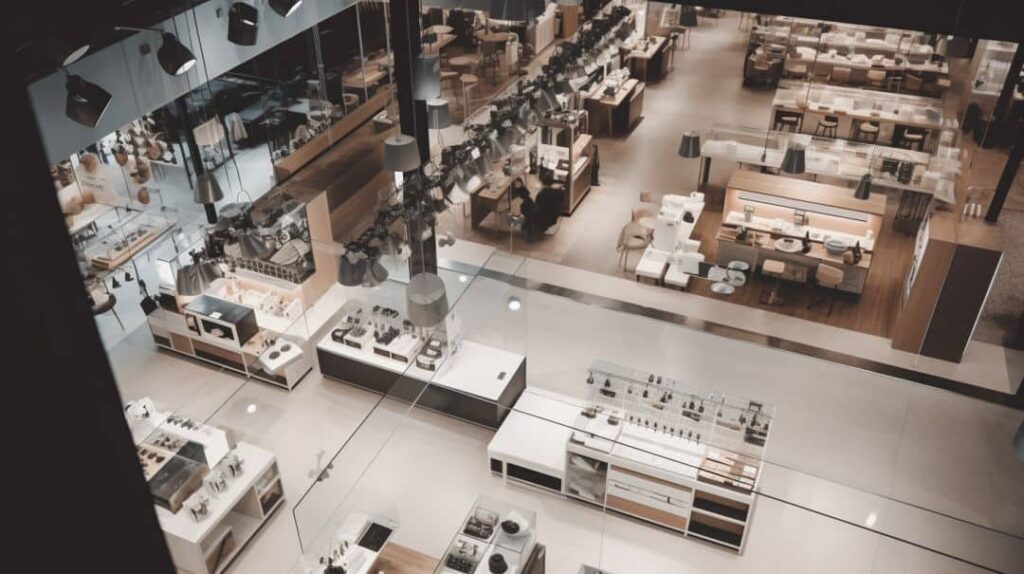
Retail store owners have multiple options when looking to enhance their video surveillance capabilities and coverage. Upgrading to new solutions can maximize crime deterrence and investigation effectiveness.
Utilizing Wireless Security Cameras
Wireless security cameras provide flexible placement options without the need for running data cables.
- Wireless units are quick and easy to install in any location without wired infrastructure.
- Ideal for rapid temporary deployment or frequently changed layouts.
- Avoid disruptive construction and costs associated with installing wired runs.
- Wireless systems can be expanded with additional cameras at lower incremental cost.
Look for models with secure encryption to prevent signal interception and robust construction to deter tampering.
Multi-Sensor Cameras
Multi-sensor cameras incorporate specialized secondary lenses and sensors for expanded functionality beyond standard surveillance.
- 360° panoramic models provide complete area coverage with no blind spots.
- Infrared sensors enable night vision capabilities on poorly lit loading docks or parking lots.
- License plate recognition (LPR) cameras log vehicle details at access points.
- Thermal cameras detect body heat to find concealed persons or items.
The secondary imaging sensors operate independently or concurrently with the main camera.
Upgrading Analog Systems with IP Video Encoders
Retailers with older analog surveillance systems can modernize by adding IP video encoders.
- Encoders connect existing analog cameras to the digital network.
- This brings modern features like remote monitoring, motion detection alerts, digital storage.
- Upgrade is staged – new IP cameras can be gradually added over time.
- Existing cabling can be reused, avoiding replacement costs.
Video encoders bridge analog cameras into new IP-based systems.
Temporary or Mobile Surveillance Solutions
Temporary camera systems provide versatility for seasonal, event-based, or mobile surveillance needs.
- Battery-powered cameras can be flexibly positioned as needs change without wiring constraints.
- Trailer-mounted platforms allow quick relocation and coverage of temporary venues or construction zones.
- Portable kits provide rapid deployment for events, holiday rush periods, or to fill temporary coverage gaps.
Temporary systems help retailers adapt surveillance strategically based on evolving requirements.
Cloud Storage and Management
Cloud-based services reduce reliance on physical NVR equipment for smaller retailers.
- Cloud systems allow access to live and recorded video from any web browser or mobile device.
- Built-in video analytics like motion detection help filter unimportant footage.
- Scalability to add locations and additional cloud camera licenses as needed.
- Lower hardware investment since no physical recorder is required on site.
Cloud solutions simplify video management and retention for multi-site retailers.
Upgrading video surveillance technology helps retailers adapt coverage to growing and changing risks.
Conclusion – The Essential Role of Security Cameras in Retail Safety
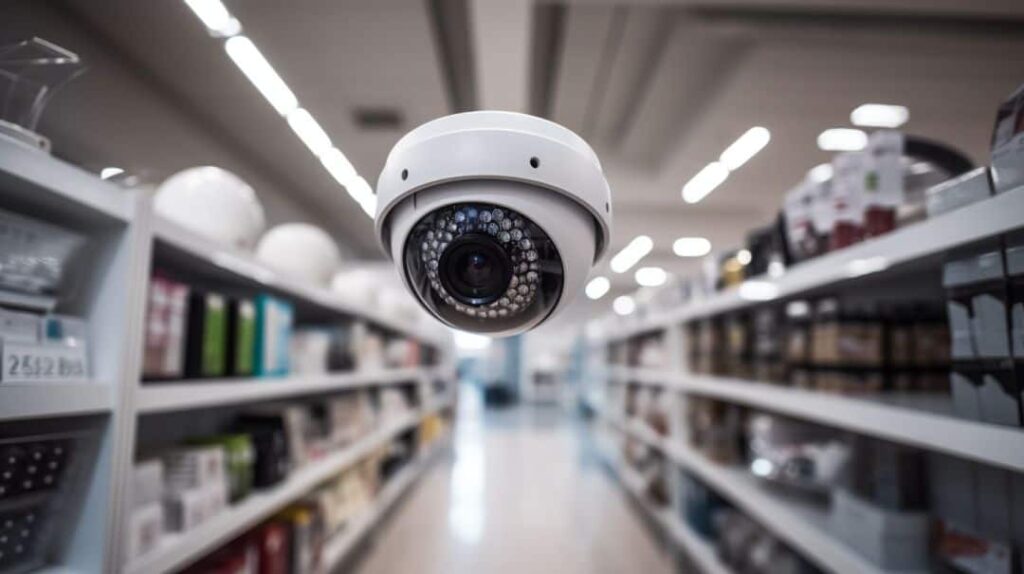
Implementing a well-designed video surveillance system is one of the most valuable investments a retail store owner can make when it comes to protecting inventory, employees, customers, and profits. Security cameras provide indispensable benefits that impact nearly every aspect of retail operations and risk management.
Deterring Theft, Reducing Losses
The powerful deterrent effect of visible security cameras results in dramatically lower shoplifting rates, employee theft, and inventory shrinkage through burglary or administrative error. Both opportunistic criminals and dishonest staff are discouraged from attempting theft where surveillance is present. Recorded evidence also aids police investigations and prosecutions when theft does occur. Reducing inventory losses has an enormously positive impact on profitability.
Enhancing Safety and Security
Cameras increase actual safety as well as perceptions of security by deterring violent crimes against patrons and employees. Live monitoring and alerts allow rapid response to developing threats or crimes in progress like assaults, vandalism, or active shooters. Cameras also facilitate proactive identification and correction of physical premises hazards before accidents occur. Visible proof of security measures promotes customer and employee peace of mind.
Promoting Productive Work Environments
Cameras reinforce employee adherence to policies regarding acceptable conduct, performance, and safety practices. Worker productivity and customer service excellence are improved by positive accountability. Video footage also provides unbiased evidence to resolve disputes involving employees. A well-managed, ethical workforce is essential for customer satisfaction.
Resolving Liability Claims Fairly
Video evidence lends clarity in settling liability claims from customers as well as defending against fraudulent injury lawsuits. Date-stamped recordings verify legitimate incidents, while exposing exaggerated or fake “slip and fall” scams. Justified claims can be promptly resolved while fraudulent ones are denied, which helps control legal and insurance costs.
Earning Insurance Premium Discounts
Insurers award lower premiums to retailers who utilize cameras along with documented security protocols. Ongoing maintenance, monitoring, and upgrades must be demonstrated to continue qualifying for discounts. Reduced property crimes, liability risks, and claims collectively help lower insurance costs significantly over time.
Optimizing Business Operations
Analyzing camera data identifies inefficient business processes related to issues like checkout bottlenecks, cluttered sales floors, equipment malfunctions, and inventory miscounts. Results can be tracked before and after corrective measures. Monitoring also allows remote supervision of sites and timely response to developings issues.
For retailers serious about maximizing profitability through reduced losses and liability, satisfied and secure customers and employees, and optimized business performance, a properly designed video surveillance system delivers immense value that easily justifies the investment many times over.
Security cameras are indispensable tools for protecting retail stores, inventory, employees and customers while improving profitability. However, maximizing the return on investment requires proper planning, equipment selection and professional installation. For over 20 years, Jefferson Security Cameras has been helping Philadelphia retailers integrate customized surveillance solutions tailored to meet their unique operational risks, building layouts and needs. Contact our team at (267) 656-7225 to request a free consultation with our security experts. We provide transparent pricing, high-quality products and responsive support. Invest in total retail store security with Jefferson Security Cameras today.
FAQs
How many security cameras will I realistically need in my retail store?
For most shops between 2000-3000 square feet, I’d recommend a system with 6-8 cameras to start. You’ll want cameras aimed at key spots like entrances, checkout counters, high-value merchandise, aisles, stockrooms, and loading areas. It’s better to have a few too many eyes than not enough!
What camera capabilities actually help deter shoplifters and thieves?
Visible placement in plain sight, warning signs saying you have surveillance, high resolution images, strong tamper-resistant housing, adequate recording capacity, and integration with alarm systems all contribute to making criminals think twice before attempting theft. Having staff actively monitoring feeds is also huge.
Can security cameras do more for my business than just security monitoring?
Absolutely! Modern camera analytics like people counting, heat maps, dwell time tracking, and bottleneck alerts can actually help you optimize operating efficiency by showing real data on customer traffic patterns and behaviors. The insights might surprise you.
What camera image resolution do you recommend I use?
I’d suggest 1080p HD resolution for most retail applications. It delivers sharp video without monster file sizes. For wide open spaces or viewing small objects, stepping up to 4K resolution could be worthwhile. Avoid lower res like 720p or VGA if possible.
How can new camera technologies keep me protected as risks evolve?
Temporary, wireless, and mobile surveillance solutions allow you to flexibly respond to changing threats and events. Cloud systems with unlimited scalability make adding locations and cameras a breeze. And innovations like multi-sensor cameras open new possibilities like combining standard video with infrared night vision or license plate recognition.
How are security cameras helping retailers adapt to changing risks?
New innovations like temporary/mobile surveillance, cloud systems, encrypted wireless options, multi-sensor cameras, and video analytics allow flexible, expanding camera coverage.
